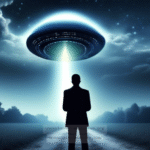What Can We Learn from the Most Compelling Ghost Sightings in Historical Locations?
What Can We Learn from the Most Compelling Ghost Sightings in Historical Locations?
The mystery of ghost sightings has fascinated humanity for centuries, captivating our imagination and sparking countless debates about the existence of the supernatural. But what can we learn from specific historical locations known for their ghostly apparitions? This question not only invites us to explore the stories behind these sightings but also challenges us to consider the implications of such experiences on our understanding of history, culture, and the human psyche. In this blog post, we will delve into various documented cases of ghost sightings in historically significant locations, exploring their background, the evidence surrounding them, and what they reveal about our collective consciousness.
Historical Context of Ghost Sightings
The phenomenon of ghost sightings can be traced back to ancient cultures, where spirits were often thought to be the souls of the deceased who remained on Earth for various reasons. In many societies, such entities were believed to communicate with the living, offering warnings or guidance. For instance, the ancient Egyptians had a complex belief system regarding the afterlife, where the soul’s journey after death was vital to their cultural practices.
In medieval Europe, ghost sightings were often tied to the societal and religious upheavals of the time. The Reformation and the Black Death led to widespread fear and uncertainty, manifesting in ghost stories that served as cautionary tales about morality and the consequences of sin. This paved the way for the modern ghost narrative, where ghosts became symbols of unresolved issues and societal anxieties.
Core Concepts: Types of Ghost Sightings
Understanding ghost sightings involves categorizing them into different types, each with unique characteristics and implications:
- Apparitional Ghosts: These are the most recognizable form of ghost sightings, appearing as full human figures that can interact with the living. Famous examples include the spirits seen at the Tower of London.
- Residual Hauntings: These involve repeated playback of past events, often linked to traumatic or significant moments in history. The ghost does not interact with the living; their presence is more like a recording.
- Poltergeists: Known for their ability to manipulate physical objects, poltergeist activity can range from moving furniture to creating loud noises. This phenomenon often occurs in homes with adolescents, suggesting a possible link to emotional energies.
Case Study: The Tower of London
The Tower of London, steeped in history and notorious for its executions, is one of the most haunted locations in the world. Reports of ghost sightings date back centuries, with many claiming to see the ghost of Anne Boleyn, who was executed there in 1536. Witnesses have described her as a headless figure, often seen near the Chapel of St. Peter ad Vincula, where she is buried.
In addition to Anne, other spirits reported include those of Lady Jane Grey and the Princes in the Tower, whose tragic fates are intertwined with the Tower’s dark history. The frequency and consistency of these sightings have led many to consider the Tower a hotspot for paranormal activity.
Practical Implications: Investigating Ghost Sightings
Investigating ghost sightings requires a systematic approach to gather evidence and analyze experiences. Here are some best practices for conducting a thorough investigation:
- Document Witness Accounts: Collect detailed descriptions from those who have experienced sightings, including the time, location, and circumstances surrounding the event.
- Use Technology: Employ tools like EMF meters, infrared cameras, and audio recorders to capture any unexplained phenomena during investigations.
- Environmental Analysis: Assess the location for factors such as temperature fluctuations and electromagnetic fields that could explain ghostly encounters.
Alternative Perspectives: Skeptics vs. Believers
Ghost sightings often polarize opinions, with some individuals firmly believing in the supernatural while others remain skeptical. Skeptics argue that most ghost sightings can be attributed to psychological factors such as pareidolia (the tendency to see familiar patterns in random stimuli) or the power of suggestion, particularly in historically rich locations where the atmosphere can evoke emotional responses.
On the other hand, believers assert that ghost sightings offer evidence of an afterlife and suggest that unresolved issues from the past can manifest in the present. The debate between these perspectives fuels ongoing research in the fields of psychology, parapsychology, and anthropology, as scholars seek to understand the nature of human perception and the possibility of life after death.
Common Misconceptions About Ghost Sightings
Several misconceptions surround ghost sightings that can cloud our understanding of the phenomenon:
- All Ghosts Are Malevolent: Many believe that ghosts are inherently harmful, but many sightings involve benign or even protective spirits.
- Ghosts Are Always Visible: The idea that ghosts must appear as full apparitions is a misunderstanding; many hauntings manifest through sounds, sensations, or environmental changes.
- Scientific Evidence Exists: While anecdotal evidence is plentiful, there is currently no scientific consensus validating the existence of ghosts, leading to skepticism in academic circles.
Ongoing Research and Future Developments
Research into ghost sightings is evolving, with scientists and paranormal investigators using cutting-edge technology to explore these phenomena. Innovations in audio and visual recording, combined with advances in psychological studies, promise to shed new light on ghostly encounters. Researchers are now investigating the role of collective memory and cultural narratives in shaping ghost stories and sightings.
Furthermore, interdisciplinary approaches that incorporate psychology, sociology, and anthropology are gaining traction, allowing for a more comprehensive understanding of why certain locations are deemed haunted and how ghost sightings impact those who experience them. Ongoing studies may reveal insights into the human experience of grief, loss, and the desire for connection with the past.
Conclusion: The Significance of Ghost Sightings
Ghost sightings serve as a fascinating intersection of history, culture, and the human experience. They provide a window into our collective psyche, revealing how we process grief, loss, and unresolved issues. By examining specific cases, such as those at the Tower of London, we gain valuable insights into the stories that haunt our past and shape our present.
While the debate between skeptics and believers continues, the ongoing exploration of ghost sightings encourages us to remain curious and open-minded. Whether viewed through a scientific lens or a spiritual one, these encounters challenge us to consider the mysteries of existence and the lasting impact of our histories. As we continue to investigate these phenomena, we may uncover not just the truth about ghosts but also deeper truths about ourselves. 💡
Other Articles
Recent Posts
- What Happened to Flight MH370? The Conspiracy Theories That Still Haunt Us
- What Secrets Lurk Within the Walls of the Infamous Trans-Allegheny Lunatic Asylum?
- What Evidence Supports the Existence of Bigfoot in the Pacific Northwest?
- What Happened to the Indus Valley Civilization? Unraveling the Mysteries of Ancient Urban Life
- Can Telepathy Be Scientifically Proven Through Laboratory Evidence?







